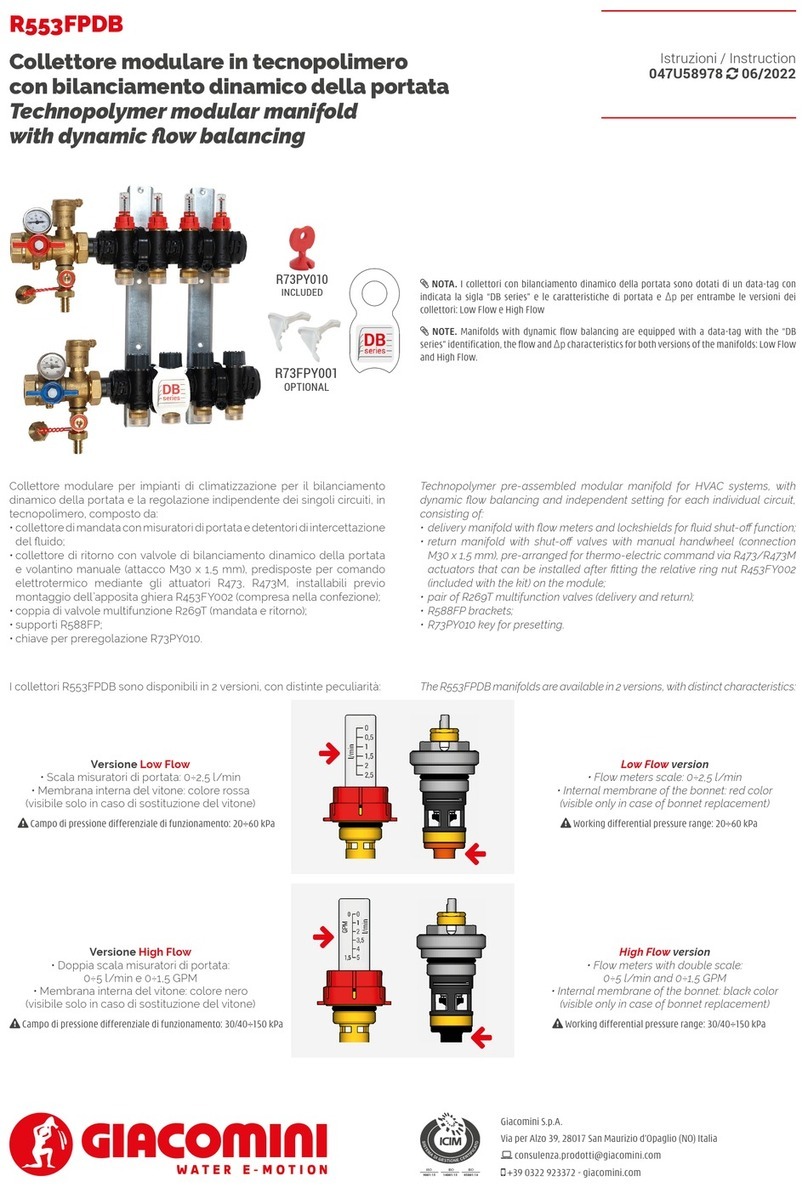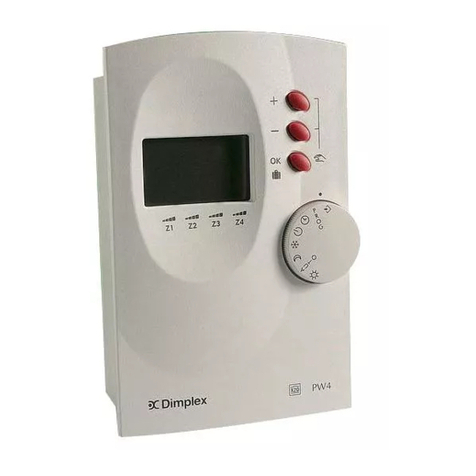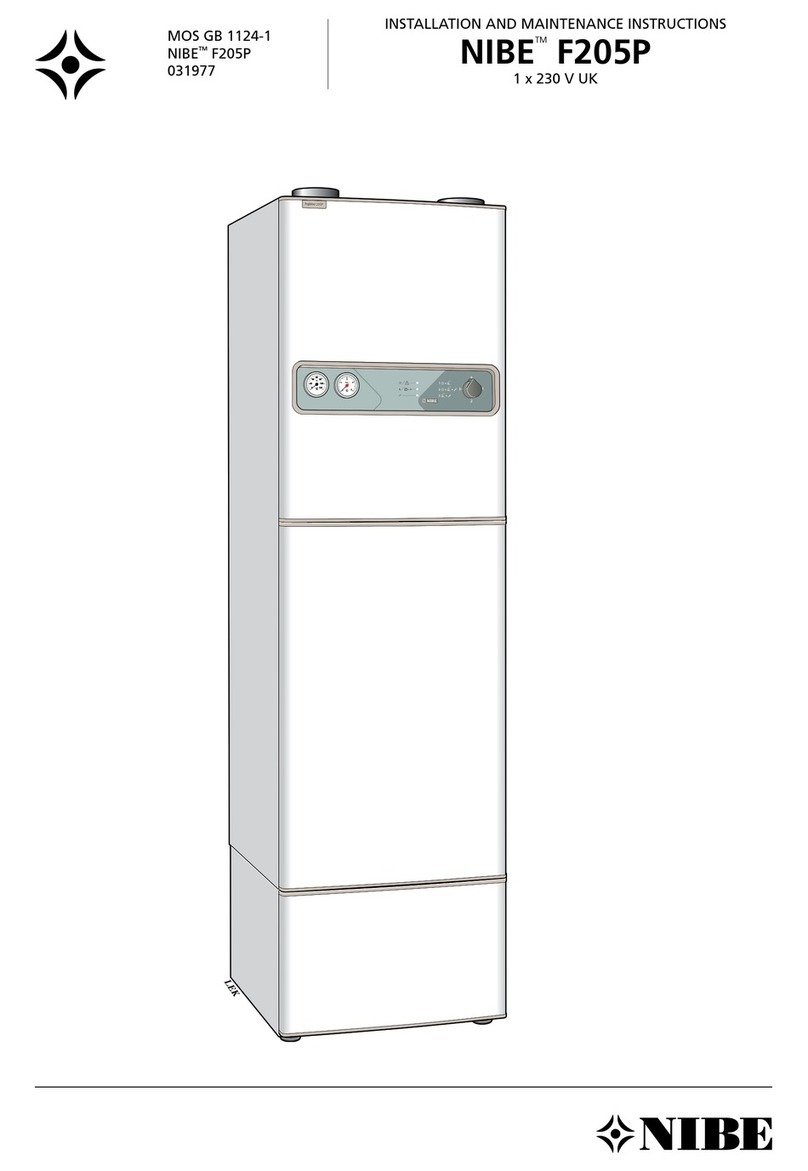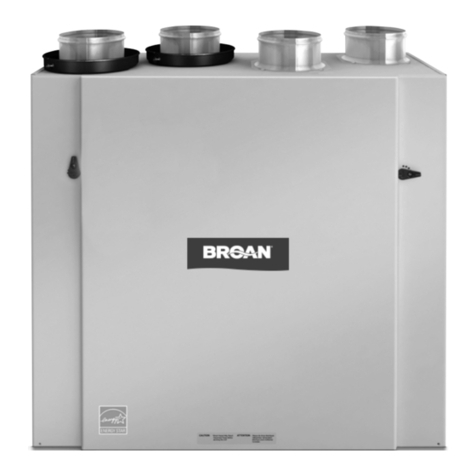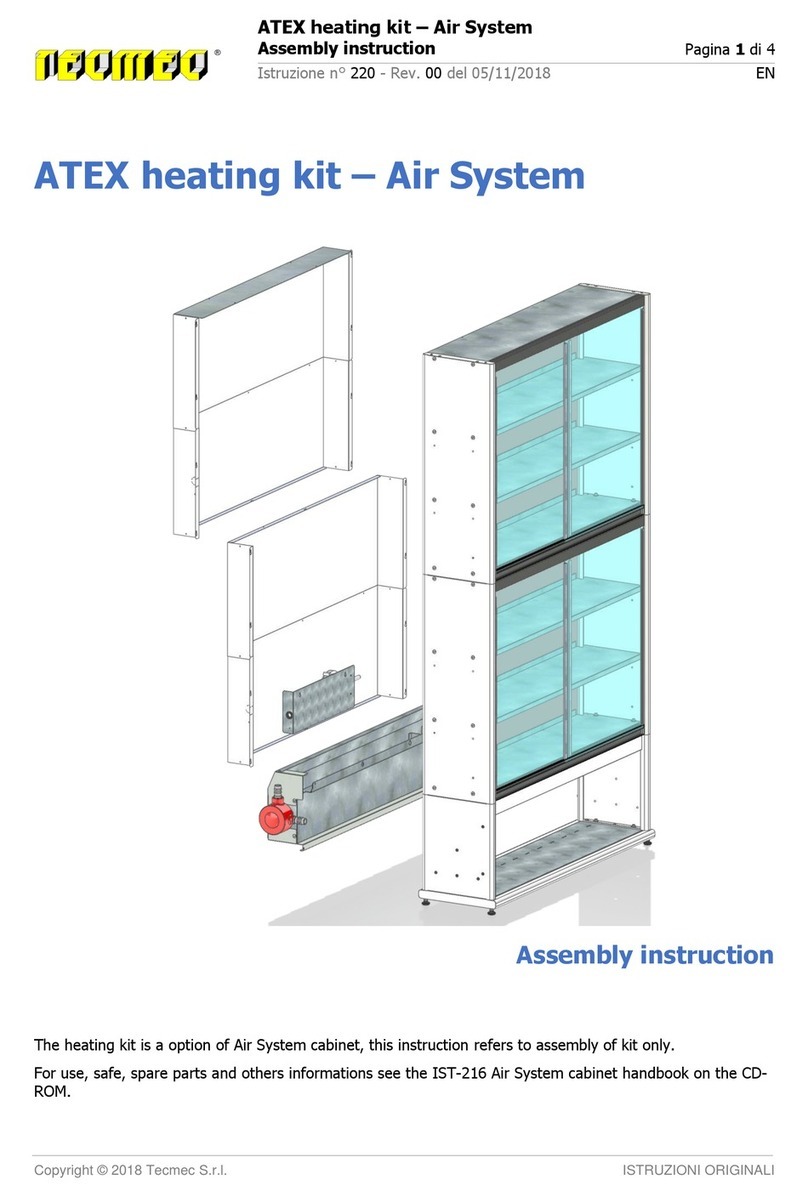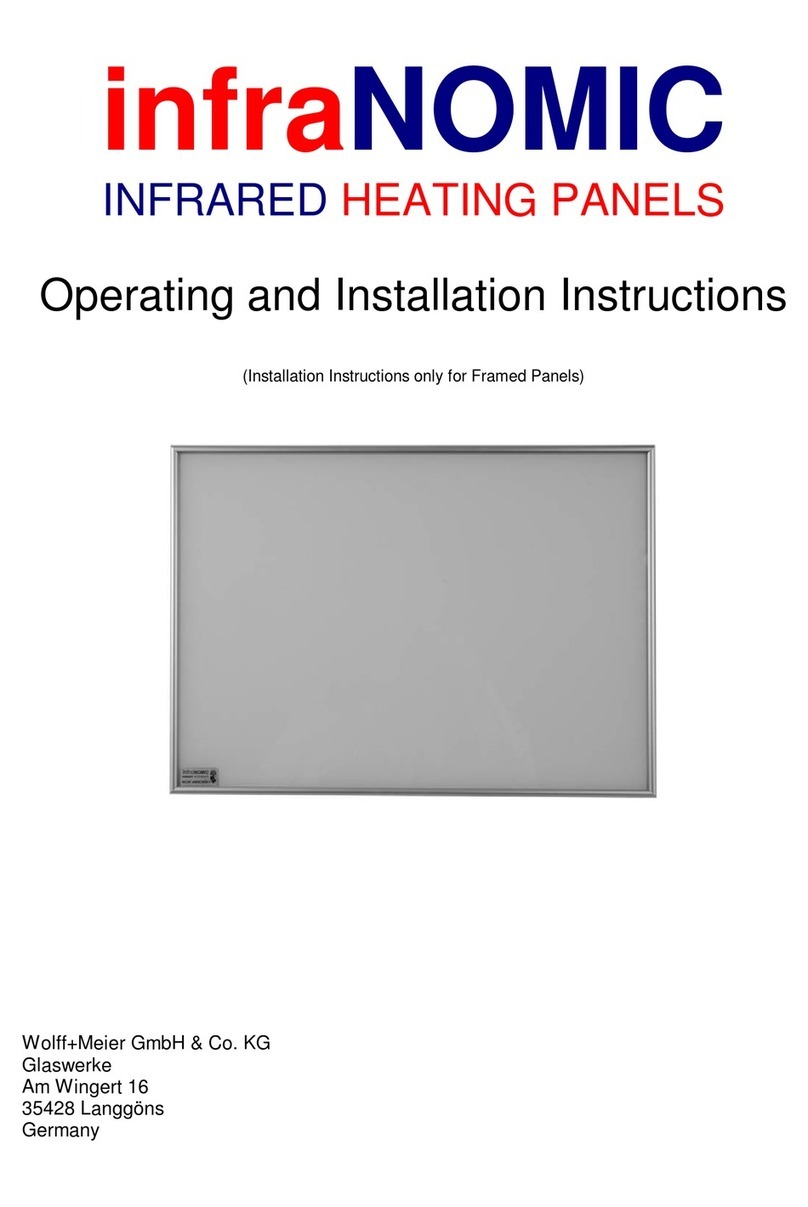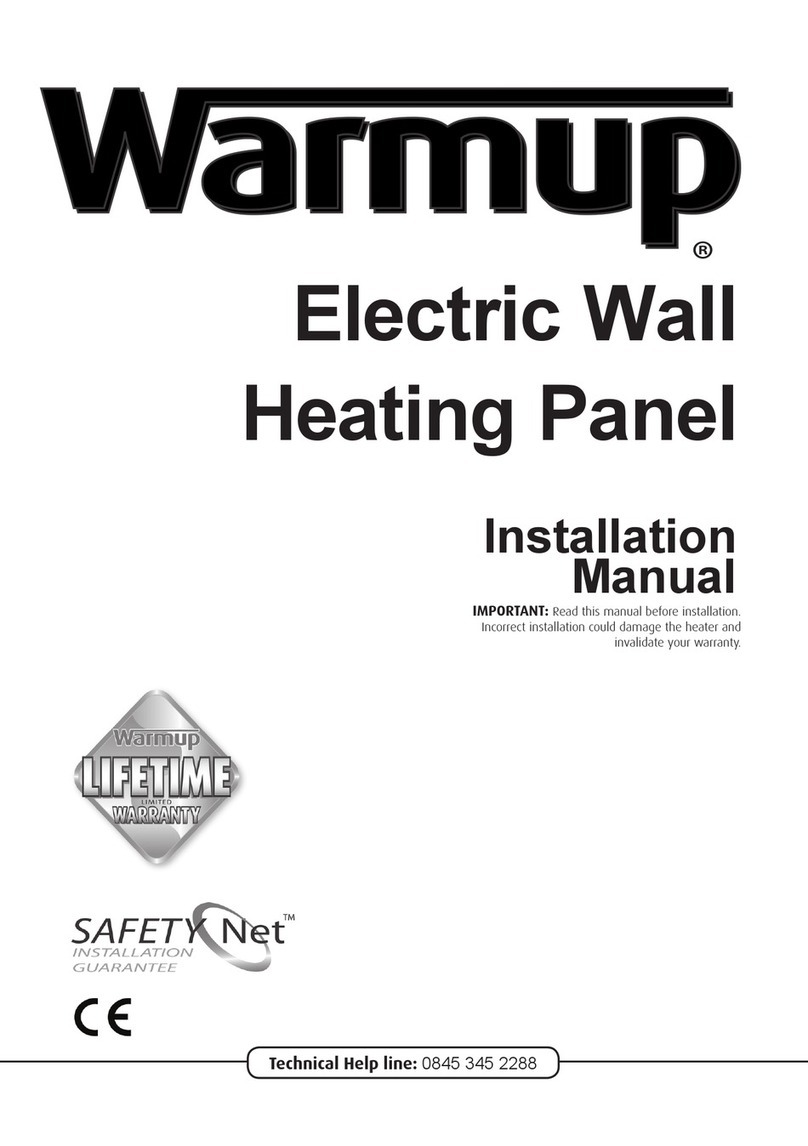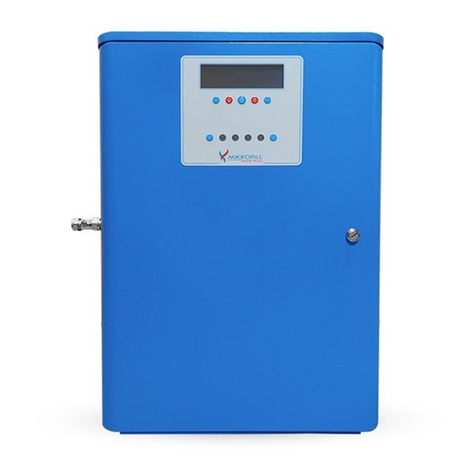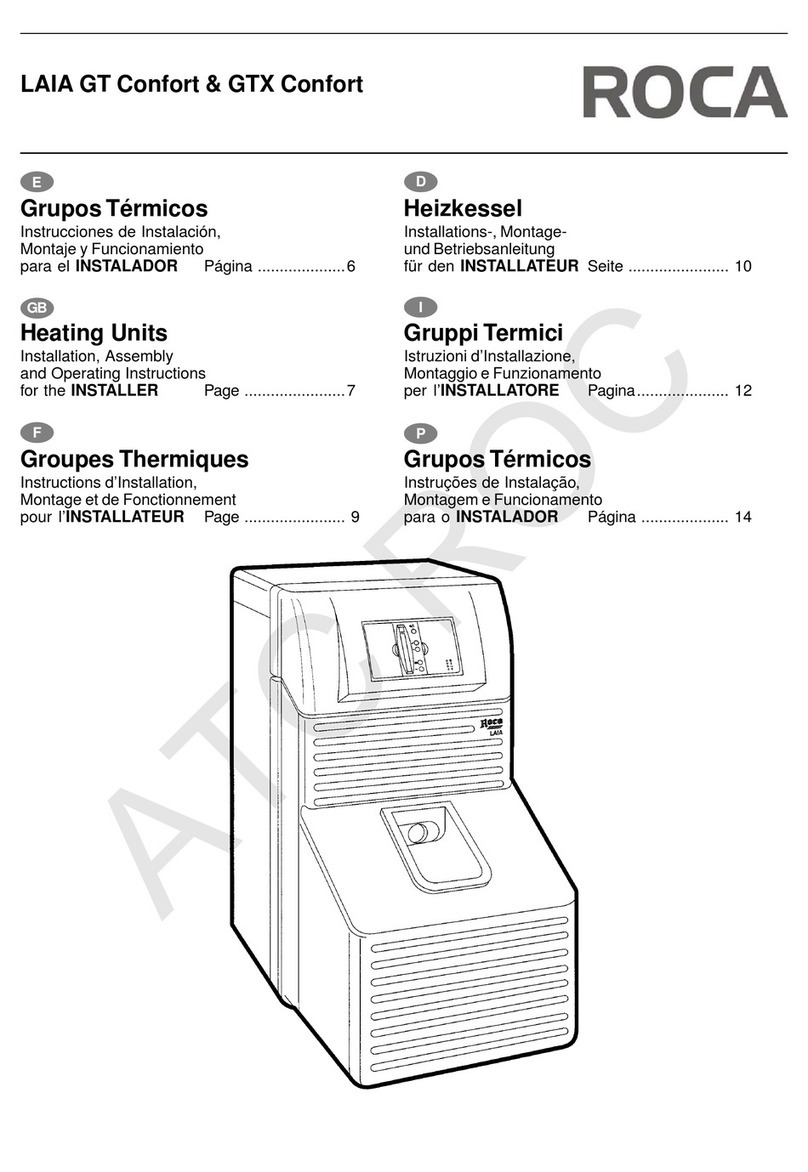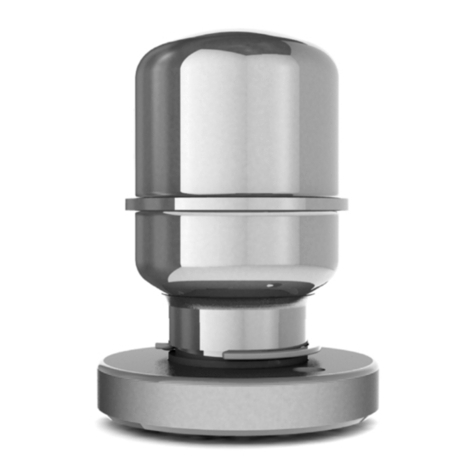Giacomini KDVRWY300 User manual

1
KDVRWY300 DUCT-TYPE AIR TREATMENT UNIT WITH AIR EXCHANGE
AND HEAT RECOVERY
12/2021
INDEX page
TRANSPORT AND STORAGE 2
DESCRIPTION AND MAIN COMPONENTS OF THE UNIT 2
DIMENSIONS 4
INSTALLATION 4
CONNECTIONS 6
OPERATION DESCRIPTION 9
START UP AND TESTING 13
CONTROL PANEL 16
DIAGNOSTICS 22
MAINTENANCE 23

2
PACKAGE CONTENT
The KDVRWY300 unit is packed on wood pallets and protected by a carton box.
The package includes:
−
1 KDVRWY300 unit;
−
1 user and maintenance manual
Package dimensions: 820x1220x 540(h) mm;
Gross weight: kg 80
TRANSPORT AND STORAGE
IMPORTANT: The parcel must travel on a pallet and be handled with mechanical means;
handling on site must be carried out with equipment fit for the package weight and volume and
in a way that prevents dents and falls: falls from just a few centimeters may damage the
content. Never turn the parcel over or upside down; should this happen, put it back in
horizontal position for at least 3 hours before installing the machine.
The parcels must be stored upright and in horizontal position, and up to three parcels can be
stacked one on top of the other. Ideal environment conditions -10 °C ÷ 50 °C, relative humidity
lower than 90%.
NOTE
Manual handling must comply with the laws in force.
DESCRIPTION AND MAIN COMPONENTS OF THE UNIT
When combined to a radiant cooling system, the KDVRWY300 unit can perform air treatment
based on the seasonal and wellness requirements. Its functions include:
-
air exchange, both in summer and winter, with at least 90% of heat recovery;
-
air exchange with no heat recovery (with external accessory);
-
summer dehumidification with adjustment of the delivery air temperature;
-
summer cooling with no dehumidification through the radiant system water;
-
winter air heating through the hot water of the radiant system.
The galvanized metal sheet frame of the unit contains the finned coils for air treatment, the
cooling circuit for dehumidification, the vacuum air filter, the condensation collection tray, the
delivery fan, the electric switchboard for control and management.

3
fig. 1
LEGEND
a)
Air delivery;
b)
delivery fan;
c)
ejection fan;
d)
foul air ejection;
e)
room air recirculation;
f)
exchange air vacuum;
g)
foul air vacuum;
h)
damper for separation from external environment;
i)
recirculation flow damper;
l)
heat recuperator;
m)
finned coils unit;
n)
plate exchanger;
o)
cooling compressor:
p)
hydraulic connections;
q)
condensation drains;
r)
electric board.
Construction characteristics
Cooling compressor Hermetic, alternative monocylindrical
Cooling gas R134a – 560g
eq. CO2 (GWP = 1430) 0,80 t
Pre-cooling coil Copper pipes (2 sets) and aluminum fins with hydrophilic treatment
Evaporation coil Copper pipes and aluminum fins with hydrophilic treatment
Water connections 2 x ½” GAS female
Air filter with synthetic-fiber filtering material - class G4 (EN 779:2002)

4
DIMENSIONS
INSTALLATION
SAFETY NOTES
Installation and maintenance should be performed by qualified operators only. Hydraulic and
electric systems as well as the installation sites should comply with the safety rules in force
in the competent country. Before any intervention, read thoroughly the instructions of this
user manual.
The machine contains pressurized cooling gas. Vent the room in case of gas leaks from one
or multiple units. The gas contained in the units may create toxic components in case of fire.
Never alter the safety devices.
This appliance is not fit for use in explosive or potentially explosive atmospheres.
Defective pipes, hydraulic connections and check valves may cause water leaks or splashes
that can damage the surrounding items and create hazardous situations wherever electricity is
present.

5
Preliminary requirements for installation
Before installing the unit, prepare:
-
the delivery and return water pipes of the radiant system with two shut-off valves for
dissection of the line;
-
the condensed water drain; two separate siphons are required, each for its own drain
and to prevent air vacuum from the drain pipe;
-
the electric supply wires, the PE protection wire (ground wire) and the operational input
signals.
TYPE OF CONNECTION CHARACTERISTICS CONDITIONS
Chilled water Temperature 15°C;
Hydraulic head 1,5 m w.c. min. T 12 °C, max 18 °C;
Electric power 10 A 230V – 50Hz – 1ph
Condensation drain Flow rate 15 l/h,
Min slant 3% 2 siphons required ∆h = 40 mm
Aeraulic ducts Min diameter same as unit
nozzles
The losses of pressure inside the
ducts, by adding up the vacuum and
the delivery for each flow, should not
exceed the hydraulic head available
for the unit
Positioning
The unit must be installed indoor in horizontal position.
A slanted position exceeding 1% could cause water leaks and/or damage the internal
devices.
Installation minimum distances
To properly maintain or repair it, provide enough free space around the machine according to
the dimensions given in the picture below. These areas, including the one occupied by the unit,
should be easily accessible.

6
CONNECTIONS
LEGEND
1 – chilled water inlet;
2 – chilled water outlet;
3
– summer condensation drain;
4
– winter condensation drain;
5 – room air delivery;
6 – room air recirculation
7 – foul air ejection;
8 – air exchange inlet;
9 – foul air vacuum;
Connection of water circuit pipes
Insert shut-off valves inside the chilled water pipes to section the system from the machine.
After connecting the circuit to the system, test the water seal of the connections and the unit to
prevent damages to the area below.
Condensation drain siphons
There are two condensation drains, one for summer and one for winter.
They are essential to prevent air vacuum from hindering proper draining of any condensation;
they should be installed separately near the unit drain ducts with a 40-mm min height.

7
Aeraulic connections
The unit includes nuzzles with gaskets for connection of the ducts:
delivery and recirculation Ø 160
air exchange and ejection Ø 125
WC/kitchen recovery air Ø 125
ELECTRIC CONNECTIONS
WIRE SECTION
The electric supply line and the section devices must be planned by qualified electric planners;
the wire must in any case feature a 3x1,5 sq. mm min section, F + N + PE.
The picture below shows the connection terminals available:
-
The electric supply must be provided on the unit;
-
The 4-thread connection to the control panel provides a 24V supply and serial
communication. The wire connected to the control panel must have a 0,5-mm2 min section;
should the wire be longer than 25 meters it must be a shielded cable.
Electronic card on the unit

8
CONTROL PANEL CONNECTION
For proper operation of the serial communication line between the control panel and the KDVRWY300
unit, a 120 Ohm, ¼ W, terminal resistance must be installed between terminals A and B of the control
panel. This should be fitted with tape on the back of the control panel in the groove provided for the
guide DIN.

9
OPERATION DESCRIPTION
The picture below shows the unit plan with the main internal components and air flows.
1 - Air/air heat recuperator
2 - Cooling compressor;
3 - water-supplied finned coil;
4 - Cooling evaporator;
5 - Freon/air condenser;
6 - Freon/water plate condenser;
7 - Delivery fan;
8 - Ejection fan;
9 - Ejection and foul air vacuum damper (optional);
10 - Room air recirculation damper;
11 - Electric board.
AERAULIC OPERATION
The air flow rates treated by the unit can be set through the control panel.
The fans automatically reach the speed required to overcome the losses of pressure inside
the ducts.
There can be two air flows inside the unit: the exchange air flow with heat recovery through
the counter-current air/air recuperator (1) and the room air recirculation flow.
The exchange and recirculation flows can be either combined or kept separate based on the
flow rates and the type of treatment desired for the inflow air.
The following air treatments are available:
-
Air exchange with optional winter heating or summer cooling;
-
Winter air recirculation, summer cooling, summer dehumidification, summer
cooling and dehumidification;
-
Air recirculation with partial exchange, in addition to all the treatments provided for
recirculation.
The air flows can be set on the following values:
-
Inflow air, with variable recirculation rate: flow rate adjustable between 200 and 300 m3/h;
-
Exchange air: flow rate adjustable between 80 and 160 m3/h.

10
THERMAL-HYGROMETRIC OPERATION
INFLOW
AIR
EJECTI
ON AIR
2 - Cooling compressor;
3 - Water-supplied finned coil;
4 - Cooling evaporator;
5 - Freon/air condenser;
6 - Freon/water plate condenser;
7 - Delivery fan;
PCB - Electronic control card;
E - Electronic expansion valve.
COOLING
The finned coil (3), connected to the radiant hydraulic system, provides summer cooling or
winter heating; the output temperature can be set from the unit by adding an external mixing
valve (supplied as accessory) or by adjusting the radiant system that controls the temperature
of the delivery water.
DEHUMIDIFICATION AND COOLING
The water-supplied coil (3) fed by the radiant system pre-cools the air; the cooling evaporator
(4) provides air cooling and, in turn, dehumidification. The cooling circuit includes two
condensers with parallel connection: in addition to the air-cooled condenser (5), a second
plate condenser (6) disposes the water condensation heat.
The two electronic expansion valves enable to distribute the condensation heat between air
and water as desired; this provides the inflow air at the desired temperature between max
cold and neutrality.
The temperature values available for the delivery air are:
-
Summer neutral temperature;
-
Summer integration temperature;
-
Winter neutral temperature;
-
Winter integration temperature.
NOTE: The cooling circuit cannot be activated in winter and for the exchange-only function.

11
delivery
water
temp.
°C
thermal
power
W
delivery
air temp.
°C
30
848
28,3
35 1274 32,5
40
1664
36,4
45 2138 41,0
delivery
water
temp.
°C
tot.
thermal
power
W
room
thermal
power W
delivery
air temp.
°C
power
required
by heat
pump
W
30
2164
811
28,1
983
35 2589 1235 32,3 1408
40
3021
1668
36,5
1840
45 3452 2099 40,8 2271
TECHINCAL DATA
Electric power V/Ph/Hz 230/
1/50
Weight kg 71
Total dehumidification capacity
(external environment 35 °C, 50% R.H.)
l/24h 44,9
W 1083
Useful dehumidification capacity
(referred to recirculation, room at 26 °C, 55% R.H.)
l/24h 25,9
W 625
Useful cooling capacity
(referred to recirculation, room at 26 °C, 55% R.H.) W 1050
Electric power absorbed by the compressor W 460
Water flow rate required l/h 400
Water circuit loss of pressure kPa 8
Power absorbed by the delivery fan (min - max) W 15 -
70
Delivery fan flow rate (min - max) m3/h 80 -
300
Delivery fan useful hydraulic head Pa 120
Power absorbed by the ejection fan (min - max) W 15 -
30
Ejection fan flow rate (min - max) m3/h 80 -
160
Ejection fan useful hydraulic head Pa 100
Energy recovery during winter operation
(20 °C - 50% internal r.h., -5 °C - 80% external r.h.)
flow rate 80
m3/h 95%
flow rate 160
m3/h 91%
Energy recovery during summer operation
(26 °C - 65% internal r.h., 35 °C - 50% external r.h.)
flow rate 80
m3/h 93%
flow rate 160
m3/h 86%
Sound pressure level
(in open field, distance 1m) dB(A) 39
Quantity of R134a cooling gas kg 0,56
Equiv. CO2(GWP = 1430) t 0,80
Specific energy consumption (SEC)
- Cold
- Temperate
- Warm
kWh/m2a
-76,13
-38,40
-4,16
SEC class kWh/m2a A
PERFORMANCE
WINTER, heating (total flow rate 300m3/h)
Recirculation Exchange + Recirculation
(300m3/h 20 °C 40%RH) (160m3/h -5 °C, 90%RH+ 140m3/h 20 °C, 40%RH)

12
SUMMER, dehumidification/integration during recirculation (300m3/h)
room
condition
°C - %RH
delivery
water
temp.
°C
cooling power
power required by
water cooling
cooling
compress
or electric
power
total
W*
sensible
W
latent
W
latent
W
l/day
W
dehumidific
ation
W
int. max
24 – 55
12
15
18
2128
1784
1463
1455
1305
1172
673
479
291
23,2
16,5
10,1
1129
954
785
2552
2232
1933
426
448
470
24 – 65
12
15
18
2372
1967
1622
1358
1189
1051
1014
778
571
35,0
26,9
19,7
1479
1264
1075
2800
2420
2098
428
453
476
26 – 55
12
15
18
2461
2022
1710
1574
1390
1265
887
632
445
30,6
21,8
15,4
1354
1119
950
2889
2475
2185
428
453
475
26 – 65
12
15
18
2740
2324
1896
1470
1301
1137
1270
1023
759
43,9
35,3
26,2
1747
1519
1275
3171
2780
2377
431
456
481
SUMMER, exchange + recirculation (160m3/h 35 °C 55% + 140 m3/h recirculation)
room
condition
°C - %RH
delivery
water
temp.
°C
cooling power
power required by
water cooling
cooling
compress
or electric
power
total
W*
sensible
W
latent
W
latent
W
l/day
W
dehumidific
ation
int. max
W
24 – 55
12
15
18
3257
2832
2391
1866
1694
1525
1391
1138
866
48,1
39,3
29,9
1953
1720
1467
3166
2767
2351
431
457
482
24 – 65
12
15
18
3358
2945
2504
1818
1654
1488
1540
1291
1016
53,2
44,6
35,1
2107
1877
1621
3270
2881
2465
434
458
483
26 – 55
12
15
18
3369
2952
2511
1906
1741
1575
1463
1211
936
50,5
41,8
32,3
2017
1784
1529
3375
2982
2567
434
458
484
26 – 65
12
15
18
3523
3086
2640
1870
1699
1534
1653
1387
1106
57,1
47,9
38,2
2212
1965
1703
3530
3118
2697
435
460
485
SUMMER, exchange + recirculation (160m3/h 35 °C 55% + 140 m3/h recirculation)
room
condition
°C - %RH
delivery
water
temp.
°C
cooling power referred to the internal
environment**
total*
sensible
W
latent
W
latent
W
l/day
\\
12
16
26
1239
387
13,4
24 – 55 15
18
1203
761
1068
899
135
-138
4,7
-4,8
12
1984
1195
789
27,3
24
–
65
15
1571
1031
540
18,7
18 1131 865 266 9,2
12
2027
1392
635
21,9
26
–
55
15
1611
1227
384
13,3
18 1169 1061 108 3,7
12
2473
1361
1112
38,4
26
–
65
15
2037
1190
847
29,3
18 1590 1025 565 19,5
*The total cooling power
comes from the
recovered heat, the pre-
treatment coil and the
direct expansion coil.
**The cooling power
referred to the internal
environment is generated
by the difference between
the inflow air enthalpy and
the room air enthalpy.
Negative values indicate
that the unit cannot
sustain the desired
conditions even without
internal loads.

13
START UP AND TESTING
Before starting up the unit, carry out all hydraulic, aeraulic and electric connections.
Also make sure chilled water is available and that there are no water leaks from the connections
and unit.
Check the tension on the electronic card: a red led will turn on when tension is present.
As soon as the tension is available, a solid green led will turn on for 90 seconds along with the
red one. The unit will be ready to receive the control panel inputs and perform the required
functions.
After 90 seconds, the green led will confirm the input sent to the cooling compressor: a solid
light indicates that the compressor is controlled when active, a flashing one means a request of
operation is in progress but the compressor is not controlled yet because it is on hold or
malfunctioning.
The functions available through digital inputs are:
-
current season;
-
exchange with heat recovery (yes, no, automatic with time slots);
-
dehumidification;
-
cooling in winter;
-
heating in winter;
-
attenuation of air flow rates versus normal settings;
The settings available on the keypad are:
-
function activation (as an alternative to digital input);
-
current time;
-
current season (as an alternative to digital input);
-
delivery and exchange air flow rates
-
normal and integration delivery temperature for each season;
-
time slots for automatic exchange (max 4);
-
time slots for flow rate attenuation (max 4).
The operator can also read the values of the unit temperature sensors which are useful during
testing or when checking the correct operation. For more details, refer to the “CONTROL
PANEL” section of this manual.

is
O
F
Damper 10 is open, damper 9
(when available) s closed,
SUMMER OPERATION MODES
EXCHANGE ONLY
DEHUMIDIFICATION ONLY
EXCHANGE + DEHUMIDIFICATION
EXCHANGE + COOLING
14
the
compressor
is ON
and the entire coil unit treats
the air. The air flow rate can
be set between 80 and 300
mc/h.
Damper 10 is open and
modulating, damper 9 (when
available) is open, both fans
are ON, the compressor is
ON and the entire coil unit
treats the inflow air. The air
flow rate of the inflow air can
be set
between 160 and 300 mc/h,
while the exchange rate can
be set between 80 and 160
mc/h.
the
e
jection fan
Damper 10 is closed, damper
9 (when available) is open,
both fans are ON and the
water-supplied coil cools the
exchange air. The flow rate
can be set between 80 and
160 mc/h. The water flow
rate can be adjusted through
an external 3-way valve
(optional).

15
Damper 10 is open, damper 9
(when available) is closed,
the ejection fan is OFF and
the water-supplied coil hea
ts
the recirculation air. The air
flow rate can be set between
80 and 300 mc/h.
WINTER OPERATION MODES
EXCHANGE ONLY
Damper 10 is closed, damper
9 (when available) is open,
both fans are ON and the
water-supplied coil heats the
exchange air. The air flow
rate can be set between 80
and 160 m3/h.
The water flow rate
can be adjusted through an
external 3-way valve
(optional).
RECIRCULATION ONLY
EXCHANGE +
RECIRCULATION
Damper 10 is open and
modulating, damper 9 (when
available) is open, both fans
are
ON, and the water-supplied
coil heats
the inflow air. The air flow rate of
the inflow air can be set between
160 and 300 m3/h while
the exchange rate can be set
between 80 and 160 m3/h.
Damper 10 is closed, damper
9 (when available) is open,
both fans are ON and the
water
-
supplied coil heats the
exchange air. The air flow
rate can be set between 80
and160 mc/h.
The
water
flow rate
can be adjusted through an
external 3
-
way valve

16
Outlet relay
ModBus connection
Digital inputs
CONTROL PANEL
The remote control panel should be installed on a guide DIN in a wall-mount electric board; the
space encumbered corresponds to 6 modules.
The control panel includes 3 terminal strips for:
-
connection of the unit with 4 threads to feed the panel (24VDC) and enable serial
communication with the electronic card;
-
the digital inputs of the various functions;
-
the two digital relay outlets that activate a circulation pump and a failure signal.
CONTROL PANEL CONNECTION
ModBus CONNECTION: this should be performed using a shielded 4-thread wire, section
0,5mm2; insert the terminal resistance in A and B. Thread V+ provides a 24V feed to the panel.
OUTLET RELAY
-
C01-NO1: 250V AC – 5A relay that activates when water circulation is required, useful
to control the pump.
-
C02-NO2: 250V AC – 5A relay that activates when a signal turns ON, useful to provide
an alarm signal from remote.

17
DIGITAL INPUTS
COM: terminal shared by all inlets;
DI01: season, 1 = summer, 0 = winter, when the season is set through a digital input
instead of a key pad;
DI02: room fan activation input; this is not an operational mode but enables to
keep the room air flowing;
DI03: exchange input
DI04: dehumidification input;
DI05: cooling input in SUMMER o heating in WINTER;
DI06: exchange stop, it enables to stop an exchange set or programmed, e.g. with DI03 or time
slots. This inlet, when connected through DI03 to a 3-position selector, type 0-1-2, provides 3
options: exchange ON, exchange OFF, AUTOMATIC exchange through time slots.
DI08: flow rate attenuation input.
OPERATIONAL MODES
Note: The operational modes for KDVRWY300 depend on the external accessories that have
been assembled.
Exchange: Air exchange with the corresponding flow rate, using the heat recuperator;
Cooling: Displayed when summer is selected; the dehumidification cooling compressor is turned
ON and the delivery temperature will be the one provided for the cooling (or integration) settings.
Heating: Displayed instead of cooling when winter is selected; the delivery temperature, obtained
through the water-supplied coil, is the one provided for winter integration.
Note: An external setting valve (optional) must be included to add integration to the KDVRWY300
unit.
Dehumidification: The dehumidification cooling compressor is turned ON and the delivery
temperature will be the one provided for operation with neutral air; Attenuation: The unit works
with the attenuation flow rates which are set by default on values lower than normal operation to
reduce aeraulic noise. This function is convenient if the user wants the unit to work during resting
times

18
Unit OFF
Press a button to
turn ON
HOW TO USE THE CONTROL PANEL
The control panel is provided with five buttons:
to enter a new screen or move to the right; to return to the
previous screen or move to the left; to move up or increase the
selected value;
to move down or decrease the selected value;
E
to confirm a modified value or to access a new submenu selected.
ACTIVATION
The initial screen when the unit is OFF will be the following:
Unit status screen
To change from “OFF” to “ON” press or ;
press E to confirm the status and move the triangle
cursor to the upper line.
To move back to the previous screen press
The initial screen displayed when the unit is ON will be the following:
current time current season
Initial screen
The initial screen shows information such as the
time, the setting season and the list of functions
with their corresponding operational status.
Every function includes the (YES/NO) caption to show
when it is ON or OFF. To display all the functions scroll
the screen using or . Should one or more
flashing captions appear, refer to chapter “MANUAL
CONTROLS”.
HOW TO SCROLL THROUGH THE SCREENS
Use the button to access a screen and the button to move back.
10:35
Exchan
Summer
NO
Cooling NO
Dehumidification
NO Attenuation NO
Freecooling NO
Status
>OFF

19
Manual
controls
Exchange
Times
Attenuation Times
Settings
Tech.
MENU SCREEN
From the initial screen press or
E
to access the menu screen:
Menu screen
MANUAL CONTROLS
The unit functions can be activated through the keypad instead of digital inputs by entering the
desired function and operational duration.
NOTES:
-
Manual controls are prioritized over digital inputs and activations provided for by
the time slots;
-
When a manual control is active the caption on the initial screen flashes.
Move the cursor to the manual control line using
or and press
E
.
Manual control screen
Place the cursor on the line of the control to be set
using or ; after pressing
E
, the user can
activate the control (displayed by “YES”), lock the
control (displayed by “NO”) or cancel the setting
(confirmed by two dashes).
After confirming the setting with
E,
the control duration will be displayed with the default value
of 1 hour; this value can also be changed by pressing
E
to select the value with the arrows.
The duration values may be increased up to 96 hours, the subsequent value is cont. which
stands for continuous operation.
Example
The settings shown in the picture are:
-
The exchange function will remain active for 1
hour and 15’;
-
The cooling function will be interrupted for
1 hour, notwithstanding the time slot and
digital inputs. The captions will flash.
MANUAL
Durat
Exchange >-- -
Cooling--
Dehumid. --
Attenuation
-
-
-
MANUAL
CONTROLS:
Exchange
Dehumid. --
Attenuation
--
Durat
ion
01:15
01:00
-
> Manual
Controls
Exchange
Times
Attenuation Times
Settings
Tech.

20
Flow rates
Summer Delivery Temp.
Winter Delivery Temp.
Free Cooling Temp.
Modulating Valve Winter
Integr. Season Source
Compr. in ttenuation
Exchange Temp. Contr.
Filter Setting Filter
Relay
TIME SLOT SETTING
The user can set time slots for the automatic activation of exchange and air flow rate
attenuation; attenuation is a convenient function to reduce the noise from air movement.
HOW TO SET A TIME SLOT
From the menu screen, select “Exchange hours” or “Attenuation hours” based on the
desired function and press
There are 4 time slots, each with a start time and
an end time on the same line.
To set a time slot, move the cursor on the start
time and press
E
: the screen will display a time
that can be changed using and ; press
E
again to confirm.
Repeat the same procedure to set the end time;
once both times have been defined, the time slot
will be set.
HOW TO DELETE A TIME SLOT
To delete a time slot, set the start and end time on the same value, the times will be deleted
and the line will display dashes only.
HOW TO SET THE CURRENT TIME OR SEASON
Changing the current time: from the setting menu, select “Set time”; use the
E
button to
select the hour or minutes and then change the time using and .
Press
E
once again or to confirm the desired value
Changing the current season: from the setting menu, select “Set season”; the current value is
immediately displayed and can be changed using and ; to confirm the change press
E
again
.
TECHNICAL SETTINGS
To access the technical settings menu enter the 4-digit password; use the number buttons one
at a time, then press Eto display the technical settings menu.
The captions below are all submenu entries. Select any caption and press E to display the
operational screen of the selected entry.
start time
end time
Exchange time
slot:
--:-- - --:--
--
:
--
-
--
:
--
Table of contents
Other Giacomini Heating System manuals
Popular Heating System manuals by other brands

OSTBERG
OSTBERG HERU LP Assembly/installation instructions

WILHELM KELLER
WILHELM KELLER OILPRESS 330.902 Installation, maintenance & use instructions
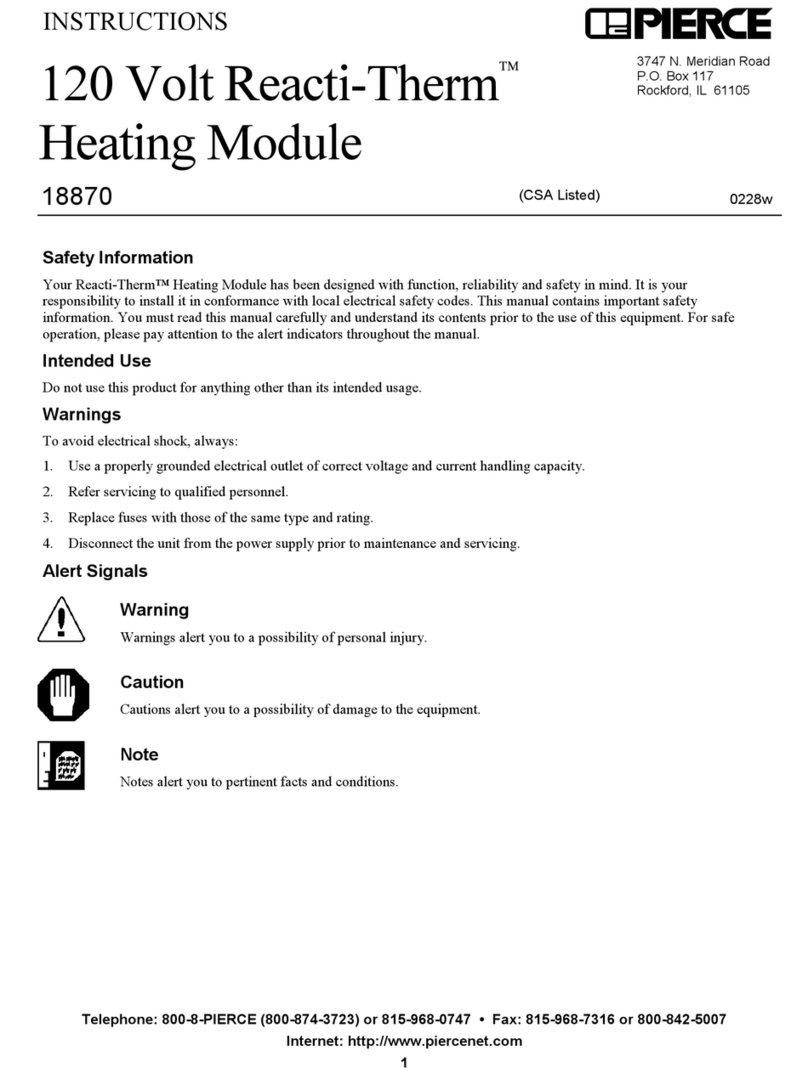
Pierce
Pierce Reacti-Therm 18870 instructions
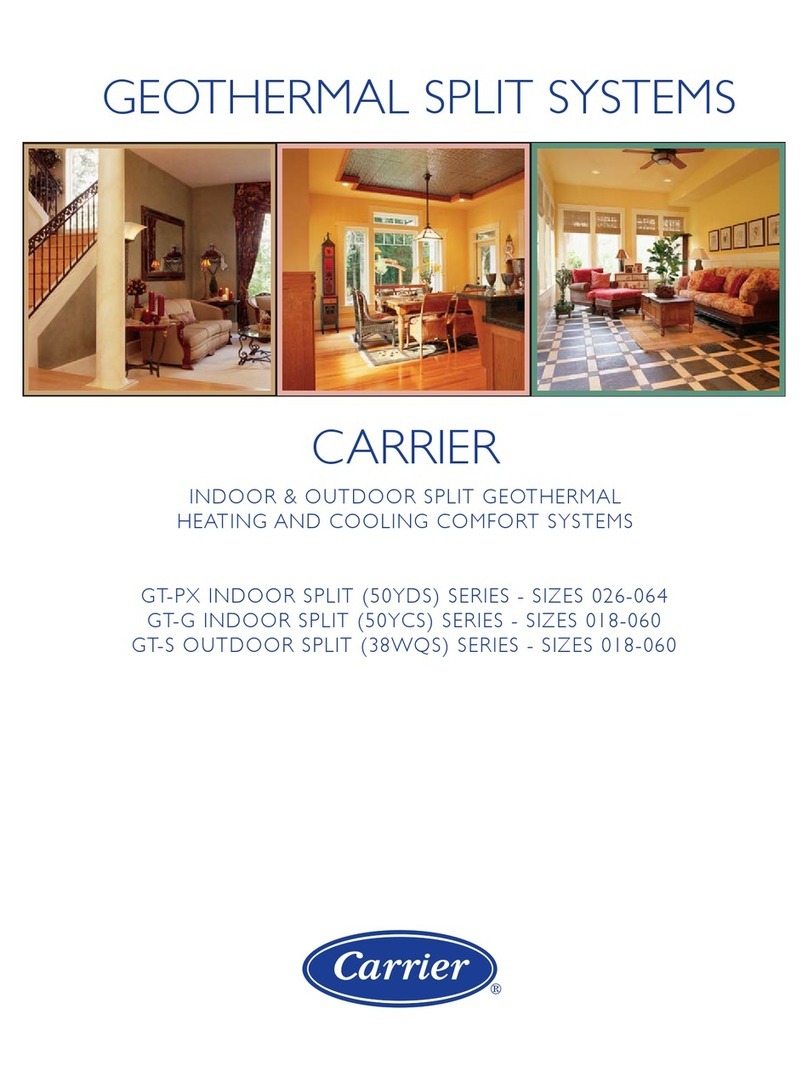
Carrier
Carrier GT-G user manual
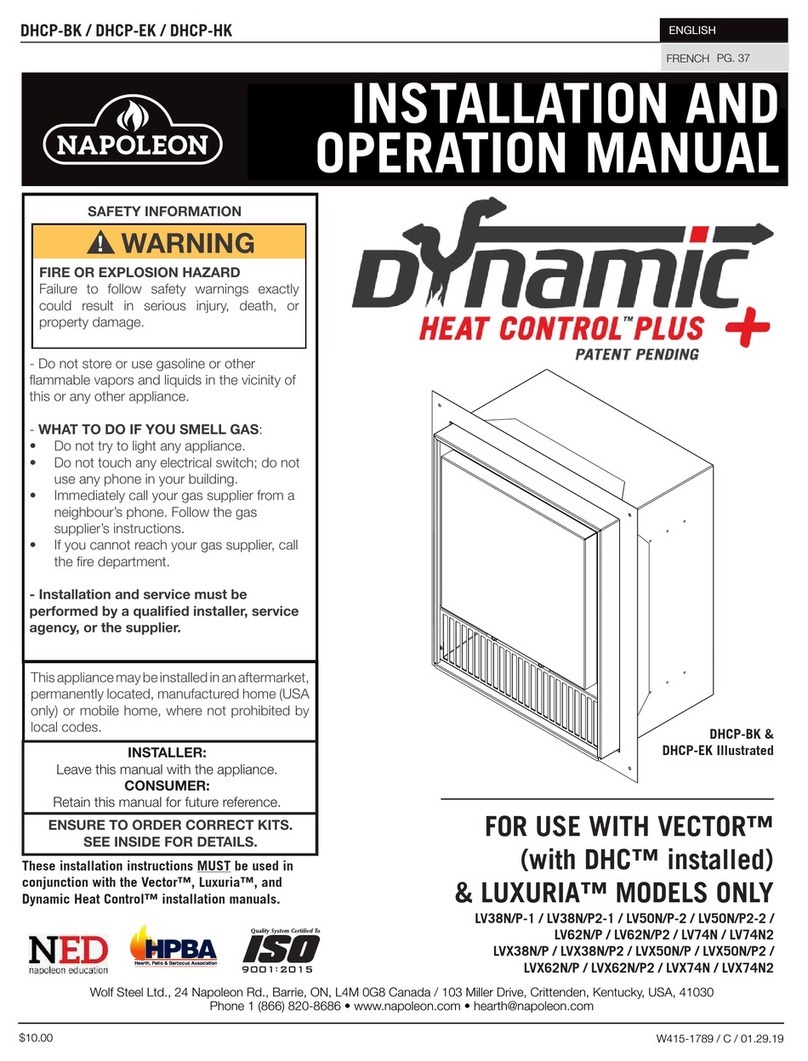
Napoleon
Napoleon DYNAMIC HEAT CONTROL PLUS Series Installation and operation manual
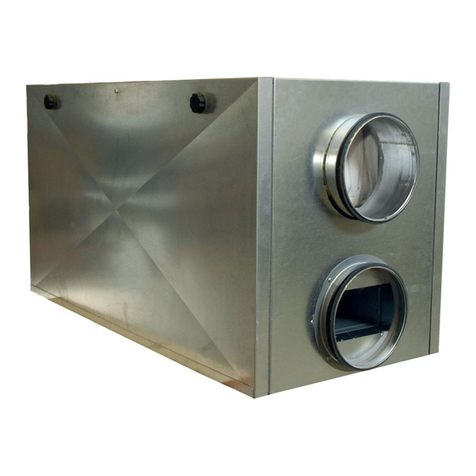
System air
System air Villavent VR 400 DC User and maintenance instructions
